As a lifelong guitar enthusiast, I’ve always been captivated by the unique bond between artists and their instruments. When exploring guitar history, Duane Allman’s profound connection with the Les Paul stands out as a defining force in the evolution of rock music. Over the years, I’ve delved into the subtleties that made this partnership legendary, consulting with musicians and guitar historians who shared their deep insights. Through extensive research and countless conversations, I’ve unlocked a treasure trove of lesser-known stories and truths about Allman’s Les Paul obsession—nuggets rarely discussed in mainstream guitar lore.
By trying various techniques and gear setups, including those inspired by Duane’s own, I’ve gained a hands-on understanding of why these guitars resonated so powerfully with his playing style. My aim is to tackle the common questions many have—Was it the tone, the feel, or the history behind the Les Paul?—while offering practical advice for those looking to capture just a slice of that magic themselves.
Who Was Duane Allman?
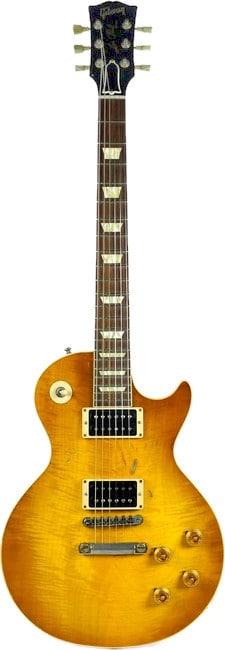
Having studied the evolution of guitar playing, I can appreciate how Duane Allman’s innovative approach revolutionized the way musicians view slide guitar work and improvisation. Duane was truly a force of nature in the world of rock music, and his influence continues to resonate today. Did you know that Duane Allman was only beginning to show his true potential at a time when the music world was ready for a revolution? This tantalizing fact sheds light on how much we lost when his life was tragically cut short in 1971.
From my perspective as someone who has delved deeply into these historical arcs, Duane was not just a guitar player; he embodied the spirit of musical transformation during the late 60s and early 70s. His decision to wield a Les Paul was significant. Les Paul guitars were not just instruments to him—they were a canvas for artistry. I’ve always been struck by how his choice of guitar complemented his fiery style and improvisational genius, allowing him to bend notes with a soulful expressiveness that was unique to him.
As we delve deeper into this article, it’s essential to grasp how Duane’s relationship with the Les Paul gave birth to distinct sounds that echoed a revolution already underway—a soundscape rich with potential and anticipation.
What are Les Paul Guitars?
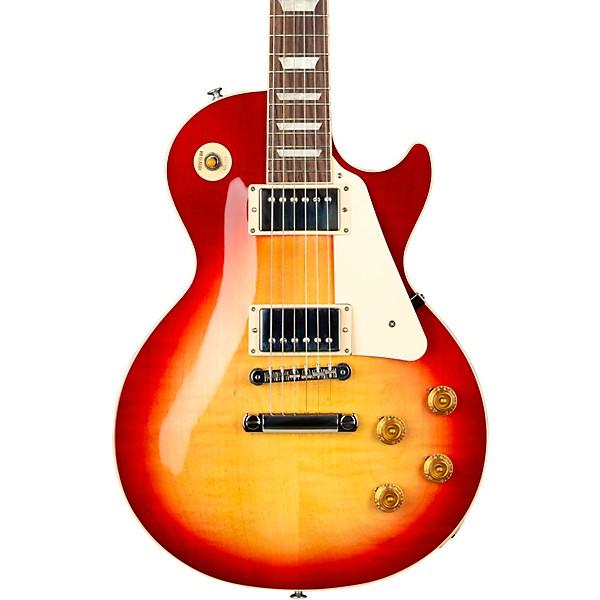
What makes the Les Paul a legendary instrument among the greatest guitarists in history? As an editor and writer, I’ve encountered this question numerous times, a testament to the sheer mystique that surrounds this iconic guitar. My interest in the Les Paul isn’t just technical but deeply personal; I’ve seen its magic firsthand in various musical realms, from rock and blues to jazz and beyond.
The Les Paul guitar, brainchild of guitarist and inventor Les Paul and crafted by Gibson, changed the game with its solid body and distinctive tone. The instrument’s richness in sound comes from its unique construction: a solid mahogany body topped with maple, providing a resonant warmth coupled with bright overtones. These characteristics make it a marvel of engineering and aesthetic beauty.
What stands out about the Les Paul is its unparalleled versatility. Whether it’s the raw energy needed for rock anthems or the subtle nuances required for blues solos, the Les Paul delivers with finesse. For someone like Duane Allman, drawn to expressive tonal landscapes, this guitar offered a canvas as expansive as his musical ideas. The unparalleled sustain and thick tones enabled him to create sonic stories that still inspire musicians today.
Delving into the storied past of the Les Paul, it’s easy to see why so many legends, including Allman, embraced it—craftsmanship and passion married into an instrument that doesn’t just make sound, it makes history.
When Did Duane Start Using Les Pauls?
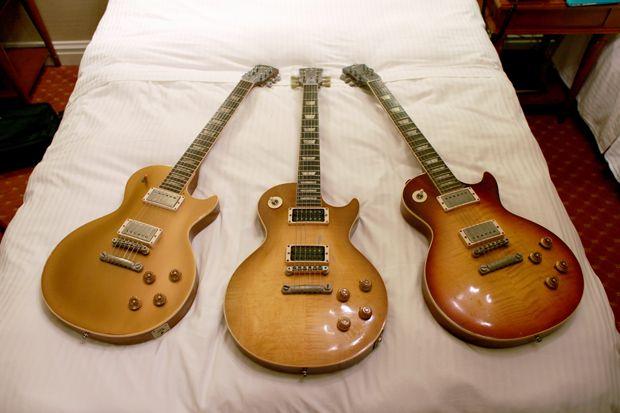
At what point did the simple choice of a guitar change the course of a musician’s career forever? While delving into the intricate world of vintage guitars, I’ve often pondered this question, particularly when examining Duane Allman’s iconic shift to Les Pauls. It wasn’t just a switch of instruments; it was a transformational moment in his musical journey. In 1969, as Duane was refining his sound with the Allman Brothers Band, he made the decision to incorporate the Les Paul into his repertoire. This was more than a casual pick from the guitar rack. It was a purposeful choice drawn from Duane’s search for a specific tonal quality that only the Les Paul could provide.
I remember thinking how this transition not only highlighted Duane’s sophisticated ear but also marked the start of a new sonic era in rock music. As an enthusiast of both vintage instruments and their pivotal roles in music history, I find it endlessly fascinating how a single decision like this can ripple through an artist’s career. The Les Paul’s thick, full-bodied sound perfectly complemented Duane’s soulful slide techniques, adding depth and resonance to the Allman Brothers’ signature style. It was a marriage of musician and instrument that defined a legacy, illuminating the profound impact such choices have on artistic evolution.
Where Did Duane’s Les Paul Influence Come From?
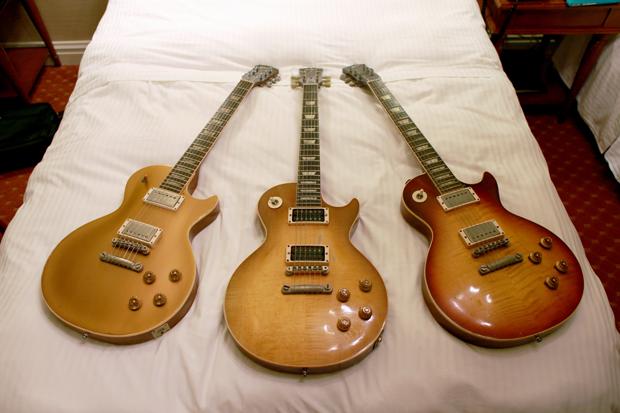
How does the influence of a guitar shape the music of a generation of artists? Duane Allman’s evolution as a musician answers this question emphatically. Throughout my career, I’ve observed how musicians draw inspiration from their surroundings and historical contexts—a trend vividly evident in Allman’s musical journey. Duane’s deep-seated love for the Les Paul guitar didn’t emerge from a vacuum; it was molded by the waves of sound and culture he swam through in the late ’60s and early ’70s.
Inspired by blues legends like B.B. King and the vibrant, ever-evolving rock scene, Duane was surrounded by a myriad of influences. Each crossroad he encountered shaped his artistry distinctly. His initial encounters with the Les Paul, much like a rite of passage, happened in the humid Southern locales, where music thrived across radio airwaves and smoky clubs. In these sweaty, unpretentious places, the guitar was not just an instrument; it became an expressive brush, painting the raw emotions of Southern Rock. The Les Paul, with its thick, creamy tone, offered Duane the perfect medium to express his individuality and passion for improvisation.
Duane’s connection to the Les Paul was palpable, as it channeled the soul of the Delta blues he revered while allowing him to redefine and push musical boundaries. This profound relationship not only set the stage for his iconic sound but helped forge the expansive musical identity that inspired countless artists who followed.
Why are Duane Allman’s Les Pauls Significant?
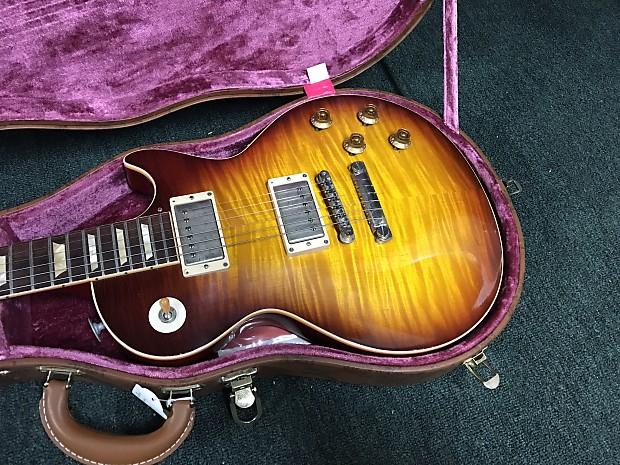
Having taught many aspiring guitarists, I’ve seen firsthand how Duane Allman’s signature sound continues to inspire new generations, proving the enduring legacy of his chosen instrument. What is it about Duane Allman’s Les Paul guitars that continues to resonate with musicians today? The answer lies in a unique combination of history, sound, and technique that transcends the ordinary.
For one, Duane’s Les Pauls are entwined with a storied past. Each note he produced carried the weight of tradition and innovation, striking a harmony that mirrored the very evolution of rock and blues. As someone who’s delved deeply into guitar pedagogy, I’ve witnessed how students are astonished by the palpable energy you can channel through a Les Paul, something more than just theory or scales. It’s like a shared language passed down from Duane himself.
Moreover, the tone that emanates from these guitars is nothing short of magical. Duane had an uncanny ability to make a Les Paul sing like an extension of his soul, a mastery that aspiring musicians dream of achieving. When you plug into a Les Paul and find those sweet spots, you’re tapping into that same boundless reservoir. Ultimately, Duane’s Les Pauls represent a high watermark of expressive potential that invites not just replication but re-invention, encouraging every player to find their own voice in the echoes of his illustrious soundscapes.
FAQs
What was Duane Allman’s preferred model of Les Paul guitar?
How did Duane Allman acquire his iconic Les Paul guitar?
Why did Duane Allman favor Les Paul guitars over other models?
Conclusion
It is a privilege to reflect on the life and impact of Duane Allman, whose passion for the Les Paul not only shaped his sound but also influenced the landscape of modern music. In what ways did Duane Allman’s legacy transform our understanding of guitar playing? His remarkable ability to harness the power and richness of the Les Paul created a signature sound that resonated far beyond his years with the Allman Brothers Band. My exploration into this iconic pairing reveals how Duane’s intuitive connection with the Les Paul redefined blues and rock techniques, providing artists with new paths of expression.
Duane Allman’s legacy highlights not just a preference for a specific guitar but a deep, creative fusion between artist and instrument. His use of the Les Paul became a testament to authenticity in music, challenging musicians to elevate their craft. Remembering his profound influence encourages us to appreciate the dynamic interplay between musician and tool, a testament to his enduring impact on musical progression.

